Лотус за Япония
Ромен Грожан:
Why do you love the Japanese Grand Prix so much?
Suzuka is probably my favourite track in the world and for many, many reasons. Of course last year holds a great memory as I led the race for a while. Also, my engineer (Ayao Komatsu) is Japanese, so it is nice for him to be in his home country. But mainly I love it so much because the track is a massive challenge and also the spectators are so passionate about F1. There is not a single corner on the track that is not a big challenge. When you finish a lap at Suzuka you really appreciate it because you know both the car and you have been really tested. You can be proud if you have got the maximum from everything.
What are the specific challenges of Suzuka?
It is the kind of track that you find time and improvements, however small, all of the time. It is a very special race track in this respect. Sector one is unbelievable and after you have finished it you can breathe a little bit…but not for long. There is no margin for error with very little run-off area and the track is quite narrow, especially at the top of the hill. I love it. Every metre of the Suzuka track is special and every metre a challenge. The Spoon Curve is especially fantastic, a real thrill to drive in an F1 car.
Where is best for overtaking opportunities at Suzuka?
There are a few good areas like the first corner, but only if you get a good exit from the last chicane. But probably the best one is in to the chicane itself, after the long back straight and 130R. If you get a tow here you can get inside under braking. There is also a small chance at the hairpin and maybe in to Spoon Curve too, but you have to be brave and usually rely on the guy in front to co-operate. Suzuka is quite a narrow track so it is not that easy to overtake, but it is a great challenge and very satisfying when you manage to execute one.
What about the whole experience of being in Japan?
You have to mention the fans. They certainly are special and unique. Suzuka is probably the only place we go to where you arrive at the track on a Thursday and the grandstands are almost full! They replay the race afterwards once, twice, three times and the fans stay at the track until we have gone home. They are brilliant fans, very loyal and knowledgeable about the sport. It is in their culture now and you can’t imagine a Grand Prix not happening in Japan. We have to have a race there anyway because I like to receive my mini-Romain every year from the fans. Fantastic!
What are your feelings now after the Singapore weekend?
Things were better for us in the race. Once the frustrations of qualifying were out of the way I was able to focus on aiming for the points. We were on schedule to have a good fight for this outcome when the safety car came out and this lost us momentum. The soft tyres took too long to come in. It was a shame but another finish was something positive.
The downforce levels at Suzuka are similar to Barcelona. Can you see a repeat of our strongest race so far this year?
I would love that but we will have to wait and see. Suzuka is a track that highlights the good aspects of a chassis. I hope that we can be in a position where we have a realistic chance of some points positions. At Suzuka the driver can make a difference to some extent, especially through sector one, so I will be hugely pumped up to make sure we are in the best position possible to add to our points tally.
Пастор Малдонадо: How much do you look forward to racing in Japan?
Very much indeed. It is always nice to know you are going to be challenged by a circuit. If everything gets hooked-up then Suzuka is a pleasure. I really hope we can have a good weekend because at Suzuka it makes it even more of a pleasure to get it right. I think that for a driver it is at least comparable with Spa, maybe even better on some corners. I just love racing at Suzuka and indeed in Japan as a whole.
What are the highlights of driving a lap at Suzuka?
There are so many. The start of the lap is incredible with the sweeps up the hill, right-left-right-left. It is really fast and you need a very good and nimble car to change direction quickly. They are really challenging corners where you need maximum concentration and bravery. The run-off is quite small, so it is really satisfying to get them right. When I first drove this track in 2011 it was a big deal for me because I knew that I could find a lot more time in the car. The corners are like this because you never get them 100% right the first time, you learn and learn which is what a great race track should be like I think. Then you have the Spoon Curve which is magnificent and 130R which is still challenging despite being flat-out now. All in all a great, great circuit and with some really steep gradients too. Almost a perfect track!
What is the best memory you have from Suzuka?
Well apart from the first time I actually drove the circuit, it was when I had a really good race in 2012. I qualified down in 14th but managed to overtake quite a few and get some points for eighth position. I remember having a good fight with Nico Hulkenberg in the Force India all race long.
Looking back at Singapore there seemed to be renewed promise?
Yes, the race was good. We had a decent race but again we were a little unlucky. At the end of the day to be fighting for points consistently and on merit is much better than some of the races we have had this year. The potential is there for us to add to our points tally, so I am confident we can achieve this soon.
How are you feeling as the 2014 season enters the final few races?
On the whole good. I am confident we can finish the season off in a good way which will give us some great momentum for the new season in 2015. Obviously it has been a difficult year but the important thing is that we are still united as a team and emerge stronger. From what I see and learn the 2015 car looks like being a very good package. There is a lot to look forward to for sure. The team at Enstone are more determined than ever to succeed and I can say 100% that I have the same outlook. We will have very high motivation for the winter in terms of preparation and then testing in the New Year.
Finally, noodles or sushi?
Both for me! I love Japanese food. Very tasty, very healthy and fresh. Almost made for a racing driver. Delicious.
Ник Честър: The E22’s relative performance looked to have improved in Singapore, what can we attribute this to?
There are a couple of things that helped us look more competitive. Singapore isn’t a ‘power’ track, so that helped us. We also took aero improvements and it contributed in making the car easier to drive and both Pastor and Romain felt the E22 was more consistent. I think we have a good chance for more points this season. The car has improved since Hockenheim when we took our front-rear interlinked suspension off and lost a chunk of performance. We have gradually fought back since then so we are in a position where we think points can be scored, if the races go the right way.
Both Pastor and Romain had turbo wastegate issues in qualifying, what light can be shed on this and what can prevent a reoccurrence?
We changed the wastegate and engine hydraulic manifold for the race and we didn’t have a problem. This is something that us and Renault Sport F1 are investigating thoroughly to ensure there is no repeat of the same scenario. There is already a clear diagnosis for Romain’s problem and appropriate measures have been taken. Pastor’s issue was actually different and all parts related to that issue have been thoroughly tested for Japan.
Suzuka is a very distinct circuit – what are the challenges?
The challenges are the high speed corners. You can’t run maximum downforce in Suzuka - as you will end up a little too slow on the straights - so you need to give the driver sufficient downforce to give confidence in the fast twisty bits whilst not clipping their wings down the straights. This is part of the reason why Suzuka is such a driver favourite, as drivers can be absolutely on the limit without the car totally stuck to the ground through maximum downforce. It’s not just having sufficient downforce, it’s ensuring that this is delivered in a balanced nature. Getting the suspension set-up spot on is essential here too. You need to extract all the grip that’s possible from the car. Looking at the E22, we think that it should be reasonably matched to all of these challenges especially as we’re generally quite good in high speed turns.
Looking to the E23, how different is it likely to be to this year’s car?
It will be quite different. There are rule changes to the front of the chassis and the nose, so all the cars will look different next year. On top of that, our engine installation and cooling layout will change quite a lot meaning that the car will be significantly different under the bodywork.
What are the various considerations between a small or large display steering wheel?
On the positive side, you can get a lot more information to the driver with a large display and that’s very helpful with complicated cars. The downside is that the wheel will be heavier, which is one of the considerations for staying with the smaller display. Next year we will likely go for a larger display steering wheel. You would be at a disadvantage if you stayed with the smaller display with the radio communications changes planned for 2015.
What are the implications for the future of diminished radio communications and even a potential ban on telemetry?
I think telemetry won’t be banned; it would be tricky to know if for example the car has a puncture or something is about to fail. You would have no way of telling if the car is safe or not. To make that move would be a step backwards. In terms of the radio communications changes we will have to adapt to the FIA guidelines.
Looking at the remaining five Grands Prix, where could be a challenge and where could we fare better?
Japan gives us nothing to fear and we should be competitive. Russia is probably the same but it’s hard to tell when it’s a new track on the calendar. I think all of the remaining circuits offer opportunities for us being more competitive. Brazil is possibly a little bit more challenging because of the power hungry nature of the uphill exit from the last corner, and the long straight combined with the altitude, although we won’t be too bad in the twisty sections.
Федерико Гасталди: Singapore showed we could fight for points. More of the same at Suzuka?
Yes. Singapore showed we could be in the hunt for points on merit. It was satisfying to get a second consecutive double finish of course, but ultimately we want points. I am sure we will get more chances and we just need that final push to ensure we capitalise on these positive situations. For Suzuka we’re pushing to get back in to the top ten. For sure, the team’s efforts deserve this reward and we are doing everything we can to get back there.
How do you summarise the driver’s performances in Singapore?
Very good. I was impressed by the way that Pastor bounced back from the incident in free practice. He showed again his strong characteristics and that he is very confident in the car when things are running well. He was on the edge of the points and looking good, even after four pit stops, which shows that when everything is right he is a very competitive proposition. Romain was typically excellent too, and did the maximum with what was available to him in Singapore. Again, I state that our drivers are racing with exceptional motivation and desire, which is reflecting the philosophy of the whole team.
How do you view Romain’s comments on the radio during qualifying?
Well, in the heat of the moment passions can boil over. Sometimes they can do so when things are not going your way and this is exactly what happened. After all, sometimes people say the drivers are too boring or don’t have opinions or show their human side. It happens sometimes under extreme circumstances and this is what happened last Saturday. We were all tremendously disappointed but of course Romain was the one who got hit by the disappointment first and he reacted. Sometimes it is difficult to stop human emotion coming to the surface. It was quite ironic that radio communications was the hot topic in Japan for the things that were not meant to be said and then they become the headlines for something else that is said under difficult circumstances!
Singapore and Japan are important commercially. The team seems to be in good stead from this point of view?
Yes, we are strong in this area which is satisfying. We have several new partners in 2014 and we have lots of them signed for 2015 as well. I think that this reflects the confidence the team has as a commercial entity even though it has been a tough season on the track. As has been reported, we are due to post much reduced losses as a company very shortly. The immediate future looks very bright and everyone is pushing extra hard to prepare for 2015.
What are the most appealing aspects of racing in Japan?
There are several. Firstly there is a huge appetite for motorsport in Japan. This is both in the sporting and technical context. Everyone knows that the fans in Japan are among the most special in terms of their knowledge and devotion to the sport. So it is very important for us to be racing here and also to have a good weekend on the track. The whole nation of Japan gets tuned in to the F1 groove and it is good for the country and for F1. Suzuka is also a great challenge for the drivers and they will be hungry to deliver. Like Spa, Monaco and Silverstone, I don’t think anyone dislikes going to Suzuka. It has everything that makes F1 great; an incredible track, great fans and somewhere that the drivers and engineers really learn a lot about the car.


















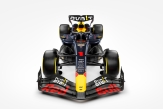
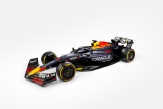

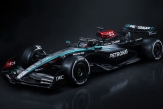
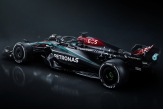


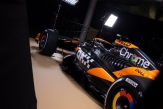

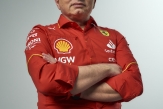
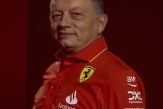
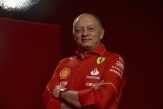

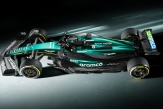

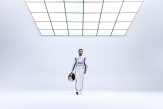


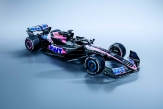
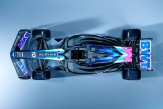

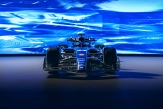

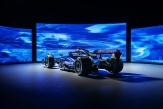
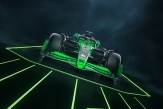
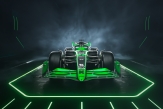
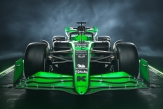

15/04/2024 от Огнян Тенчев (drJeckyll), няма коментари